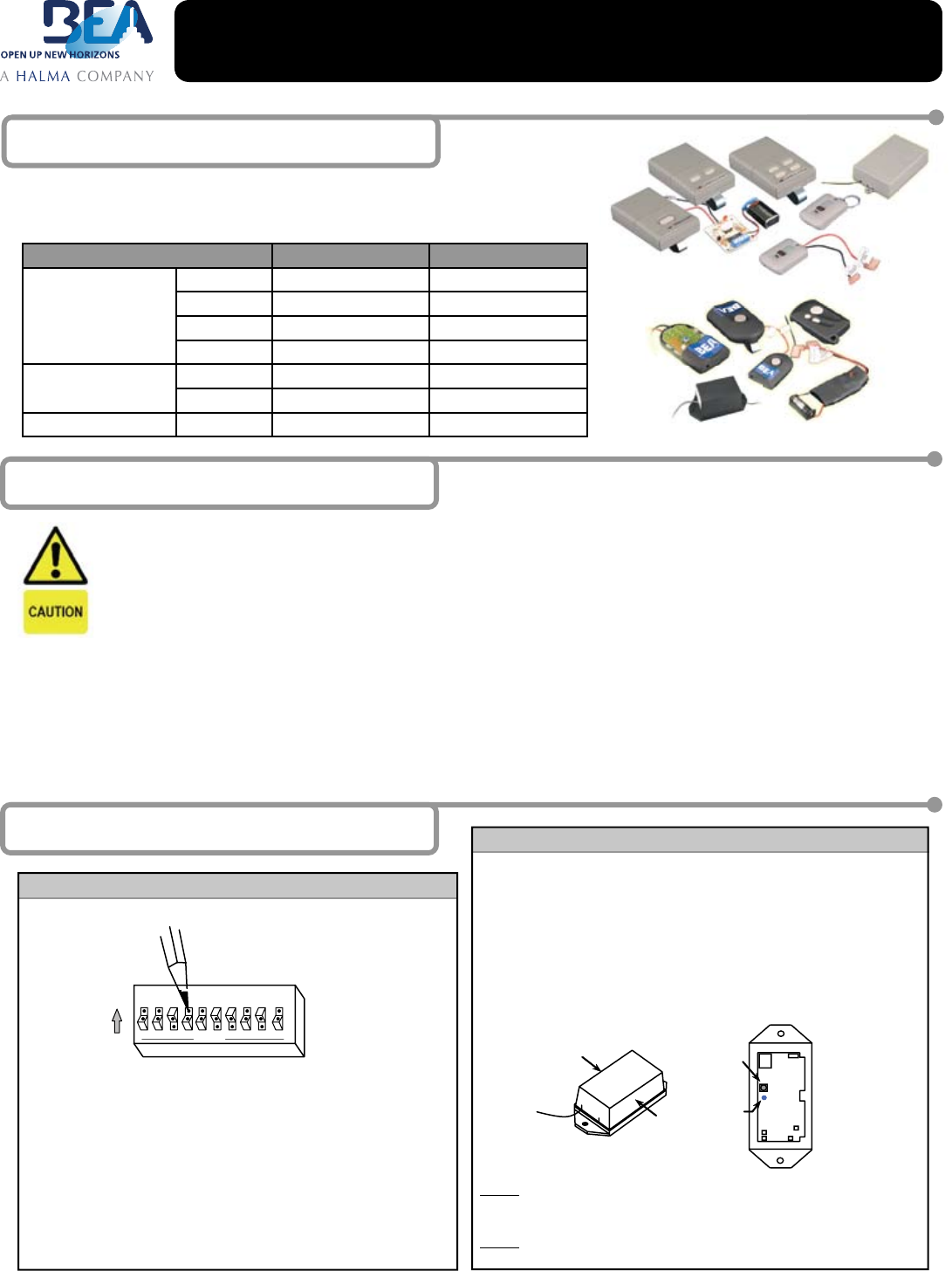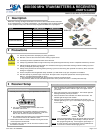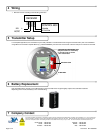
300/390 MHz TRANSMITTERS & RECEIVERS
USER’S GUIDE
1 Description
STYLE 300 MHz (Analog) 390 MHz (Digital)
HANDHELD STANDARD 10T300HH 10TD390HH
2-BUTTON 10T300HHDBL
4-BUTTON 10T300HH4
KEYCHAIN 10T300KEYCHAIN 10TD390KEYCHAIN
PUSHPLATE RELAY MINI 10T300MINIPB 10TD390WC
STANDARD 10T300PB 10TD390PB
RECEIVER STANDARD 10R300 10RD390
75.5116.03 EN 20080505 Page 1 of 2
BEA’s line of analog and digital transmitters and receivers allow reliable wireless activation
of any automatic door, in a variety of applications. The transmitters come as either handheld
units or pushplate ready units, which are easily integrated into BEA’s line of pushplates.
2 Precautions
Shut off all power before attempting any wiring procedures.
Maintain a clean & safe environment when working in public areas.
Constantly be aware of pedestrian traf c around the area.
Always stop pedestrian traf c through the doorway when performing tests that may result in unexpected reactions by the door.
ESD electrostatic discharge: Circuit boards are vulnerable to damage by electrostatic discharge. Before handling any board
ensure you dissipate your body’s charge.
Always check placement of all wiring before powering up to insure that moving door parts will not catch any wires and cause
damage to equipment.
Ensure compliance with all applicable safety standards (i.e. ANSI A156.10/19) upon completion of installation.
DO NOT attempt any internal repair of the sensor. All repairs and/or component replacements must be performed by
BEA, Inc. Unauthorized disassembly or repair:
1. May jeopardize personal safety and may expose one to the risk of electrical shock.
2. May adversely affect the safe and reliable performance of the product will result in a voided product warranty.
3 Receiver Setup
ANALOG RECEIVERS (300 MHz)
1. Manually set access codes using the dipswitches on receiver.
A. Use a pencil or similar object to set the code on the
transmitter and receiver.
B. Once the Receiver is installed, activate the transmitter to
check the code. Depending on the application, make sure
that no other receivers are set to the same code.
C. For multiple button transmitters, each of the dipswitch blocks
on the receiver must be set to different codes.
2. Install receiver inside or outside of header ensuring the unit will
not be exposed to the elements.
3. If applicable, drill a discrete 1/8” dia. hole in the header to route
the receiver’s antenna.
ANALOG 300 MHz & DIGITAL 390 MHz
DIGITAL RECEIVERS (390 MHz)
1. Open the receiver by squeezing the sides of the cover. Locate the
Learn Code Button and the Indicator Light on the digital receiver
(see below).
2. Press and release the Learn Code Button. The indicator light will
blink approximately 2 times per second.
3. Press the buttonon the transmitter once within 30 seconds. The
indicator light will stay lit and not blink.
4. Press the same transmitter button within the 30 seconds. The
indicator light will go out. Up to 7 transmitters may be programmed
to one receiver.
NOTE: If the second transmitter code is not pushed within 30 seconds,
the indicator light will blink approximately 4 times per second,
then programming will stop. If this happens, repeat steps 1-4.
NOTE: To erase all codes, press and hold the Learn Code Button for
10 seconds or until the indicator light goes out.
1 2 3 4 5 6 7 8 9 10
ON
OPEN
SQUEEZE
INDICATOR
LIGHT
LEARN CODE
BUTTON
RECEIVER
WITHOUT
COVER
ANALOG - 300 MHz
DIGITAL - 390 MHz




